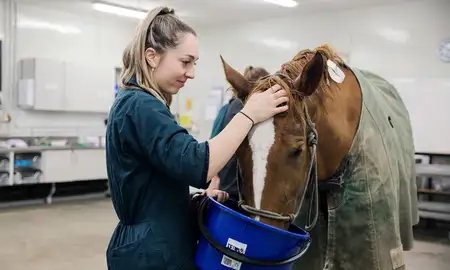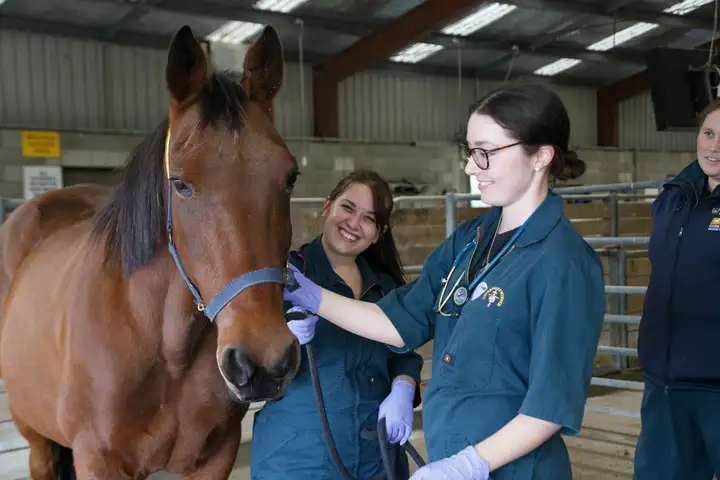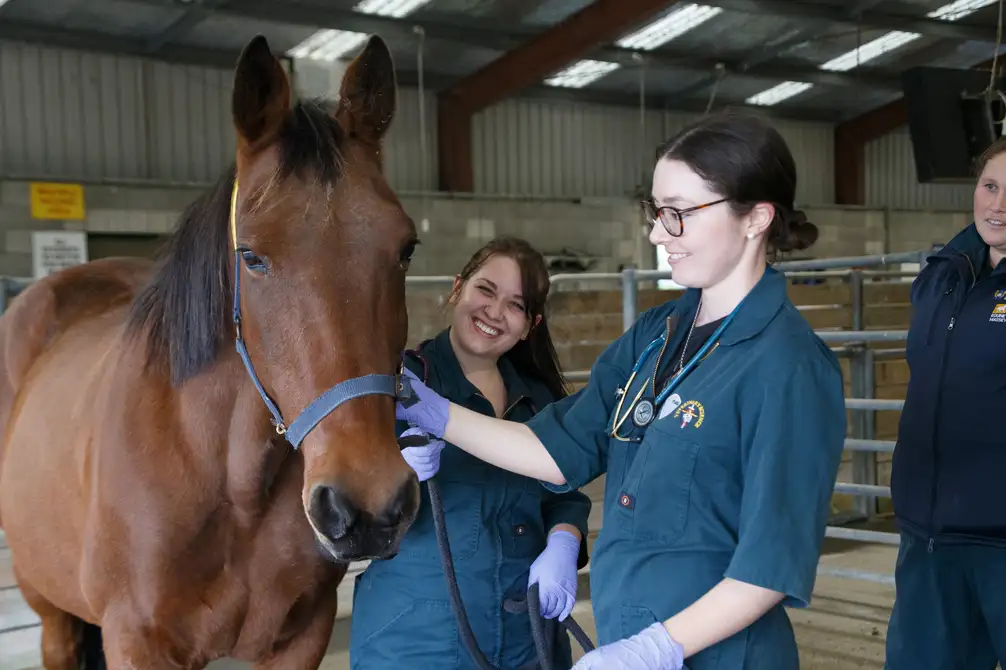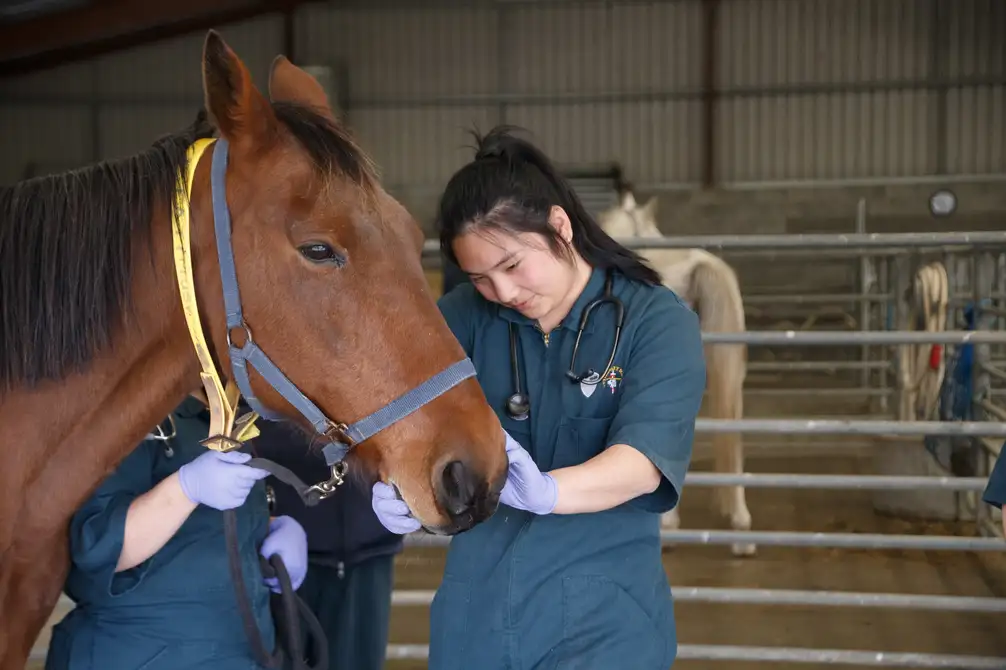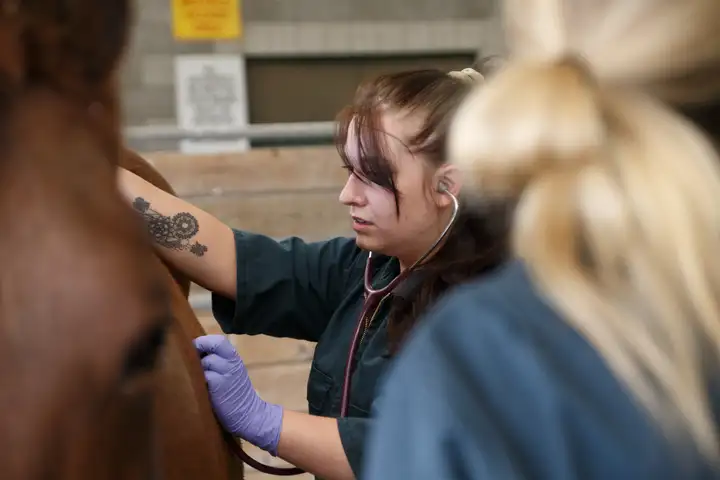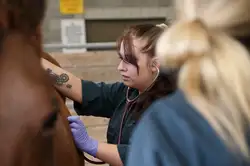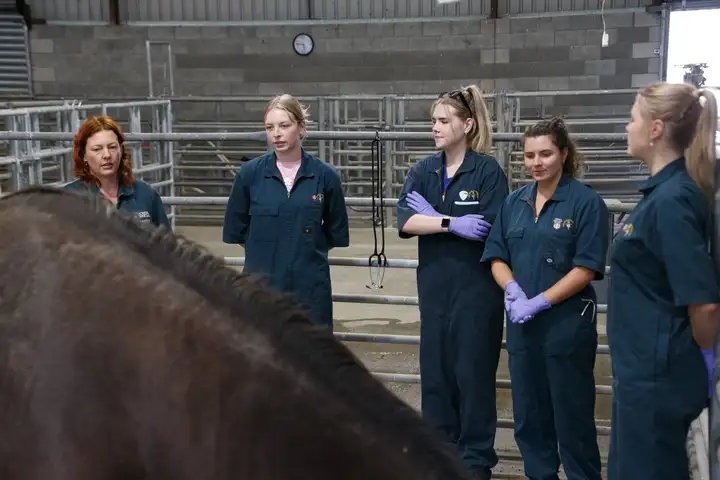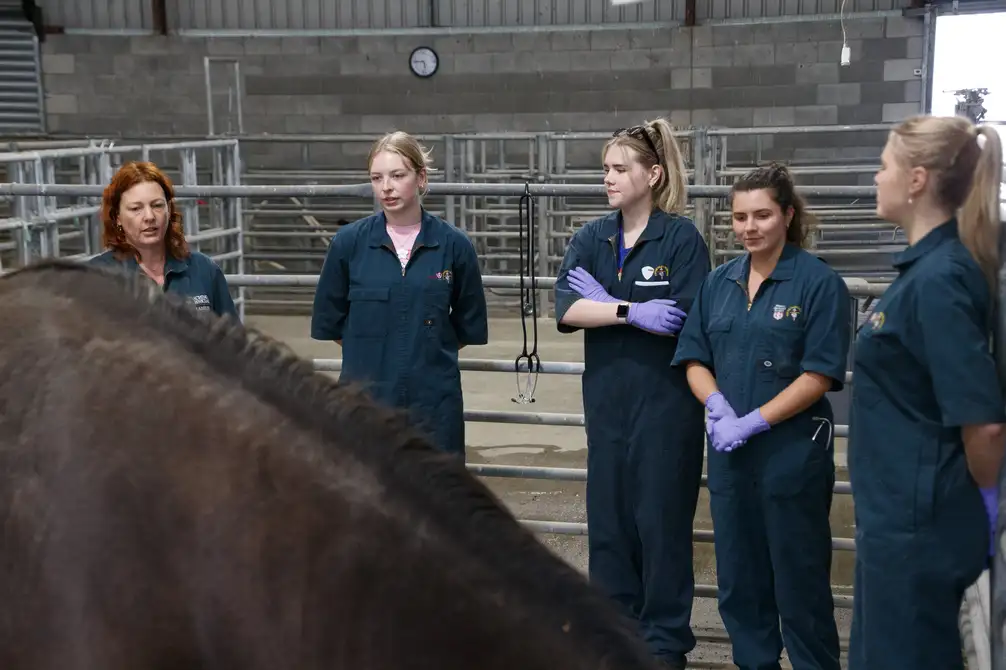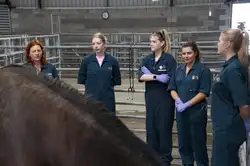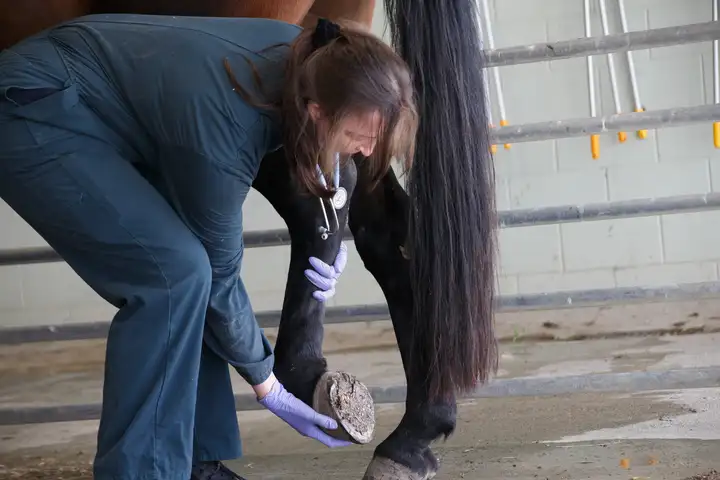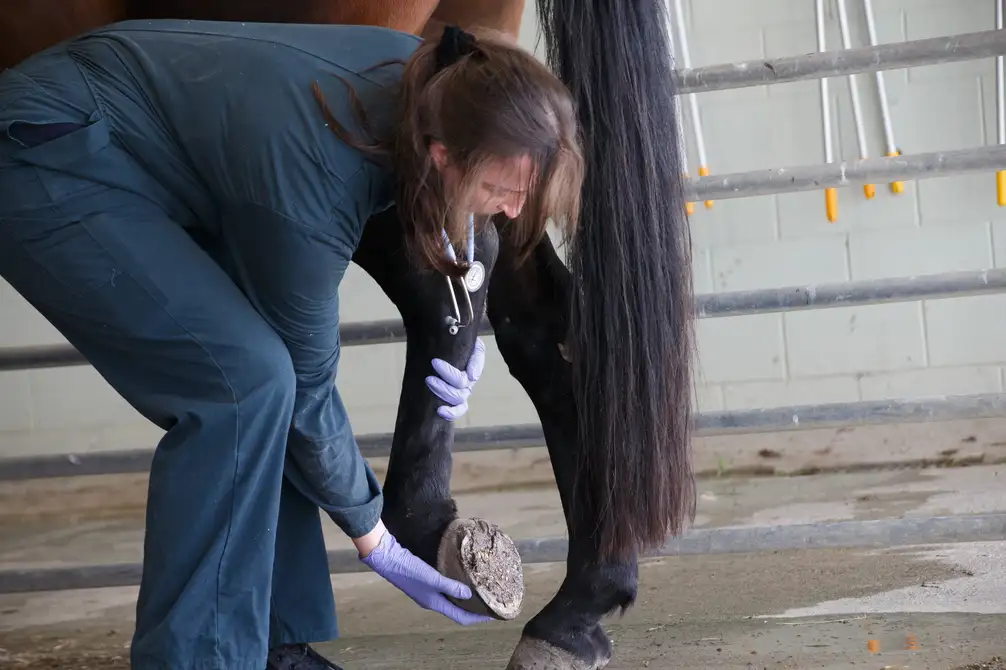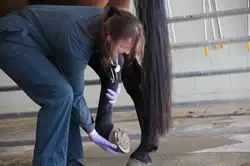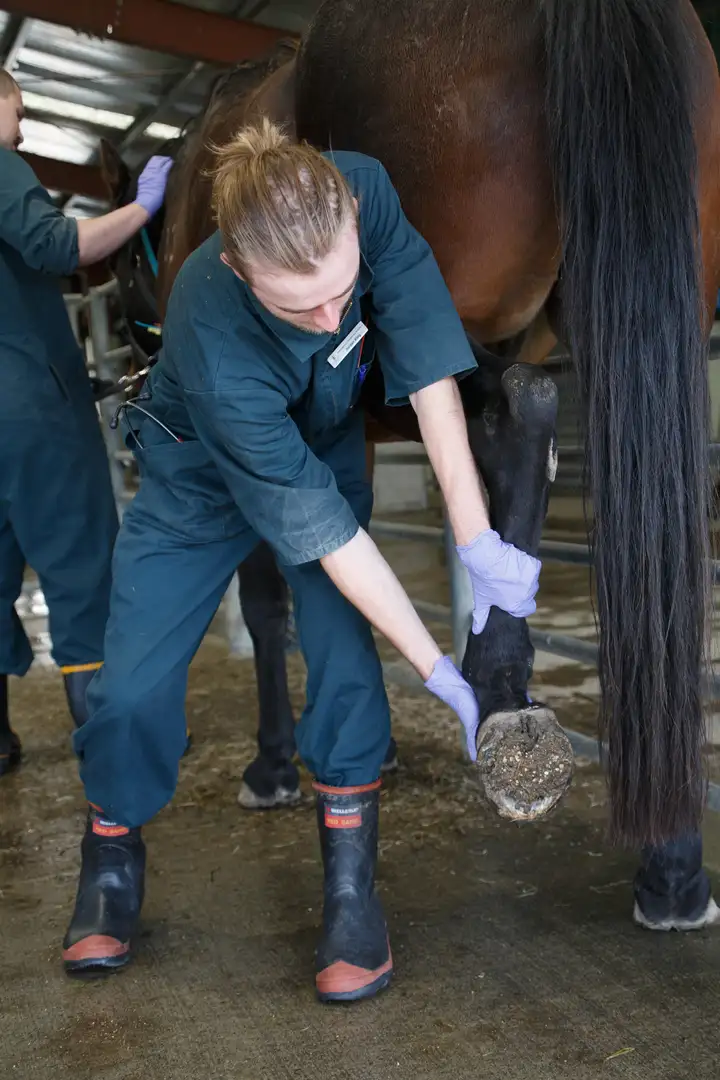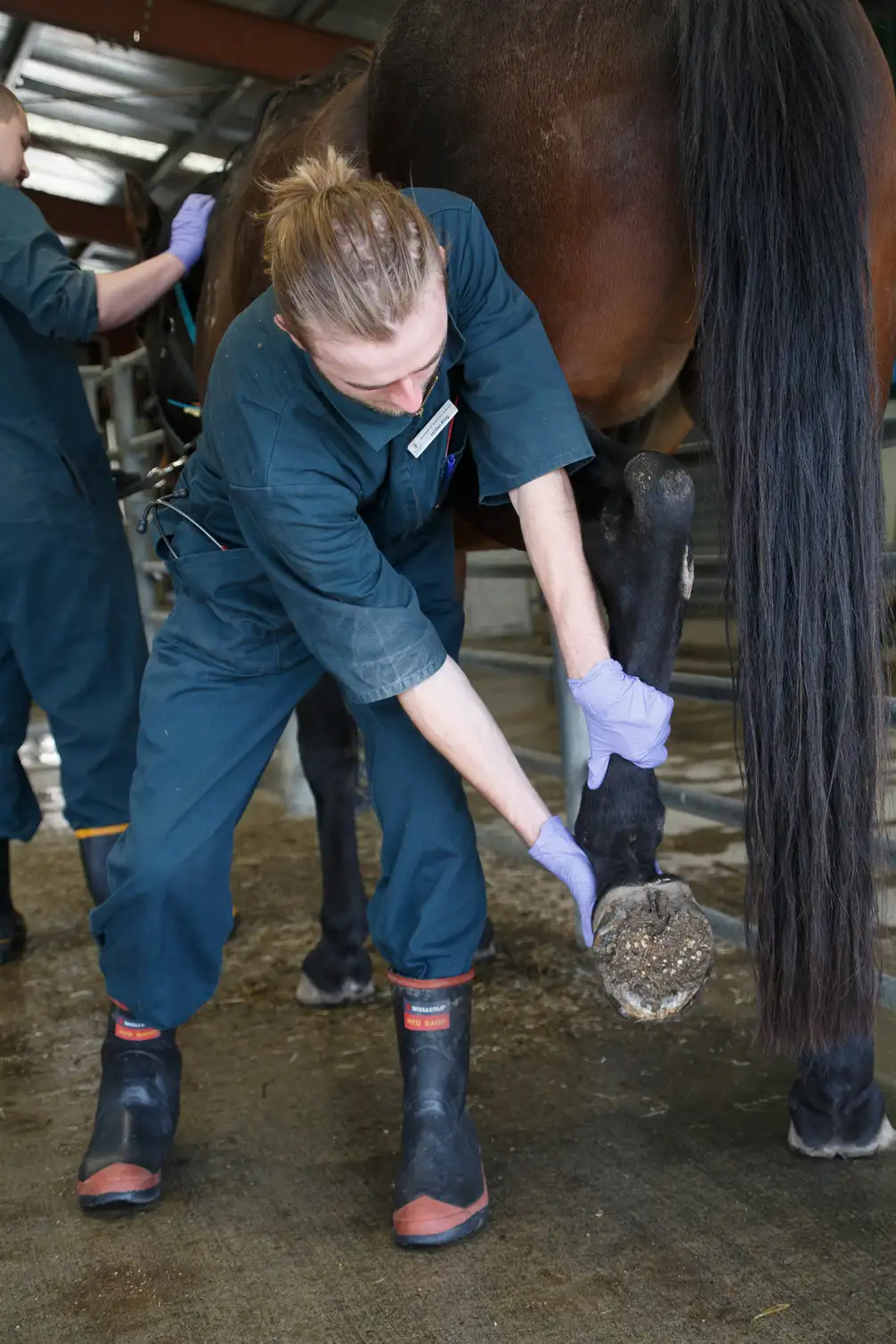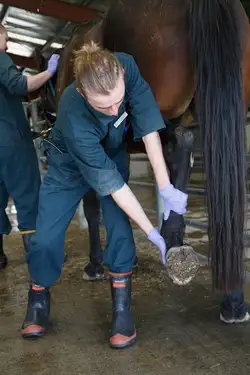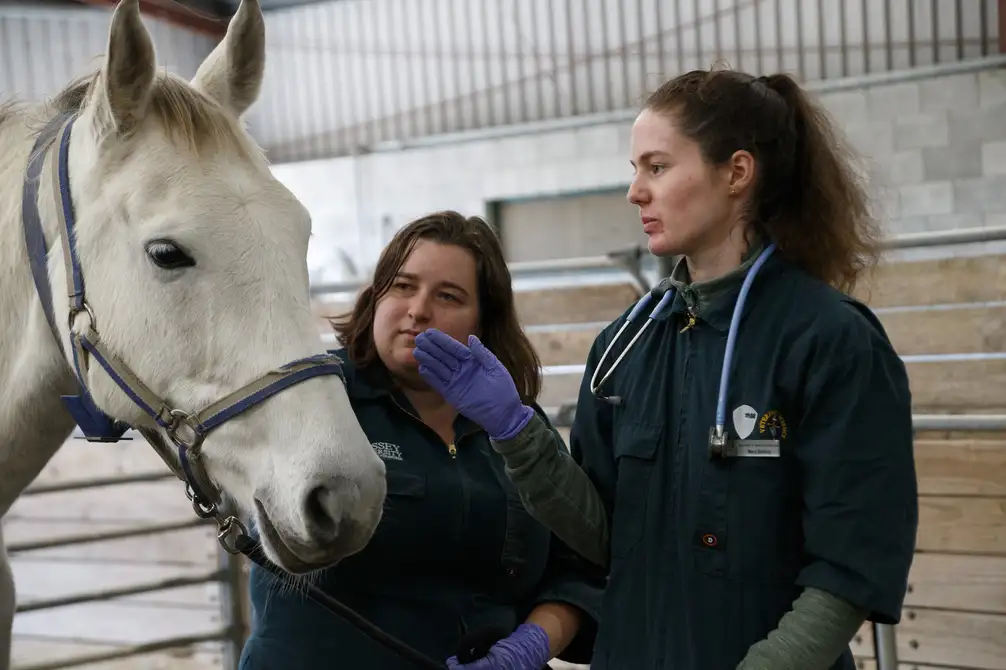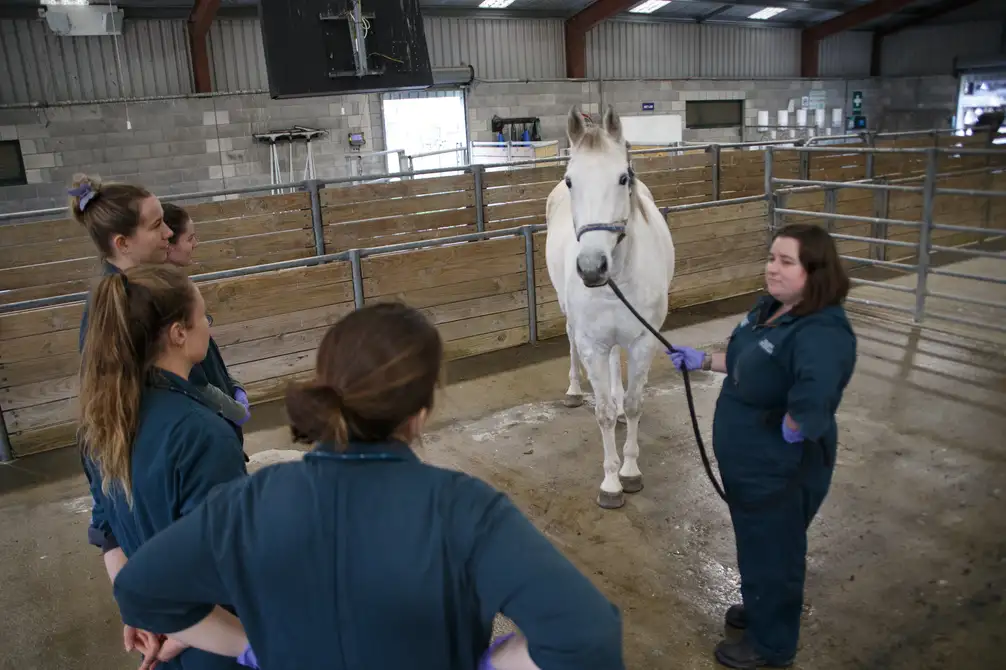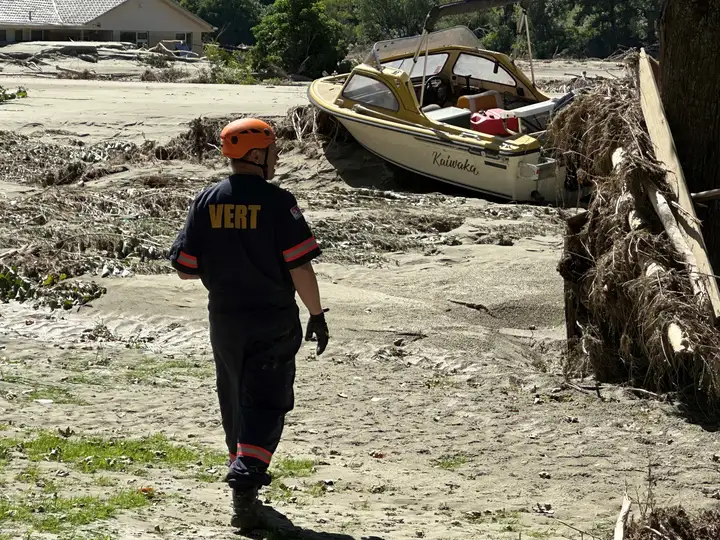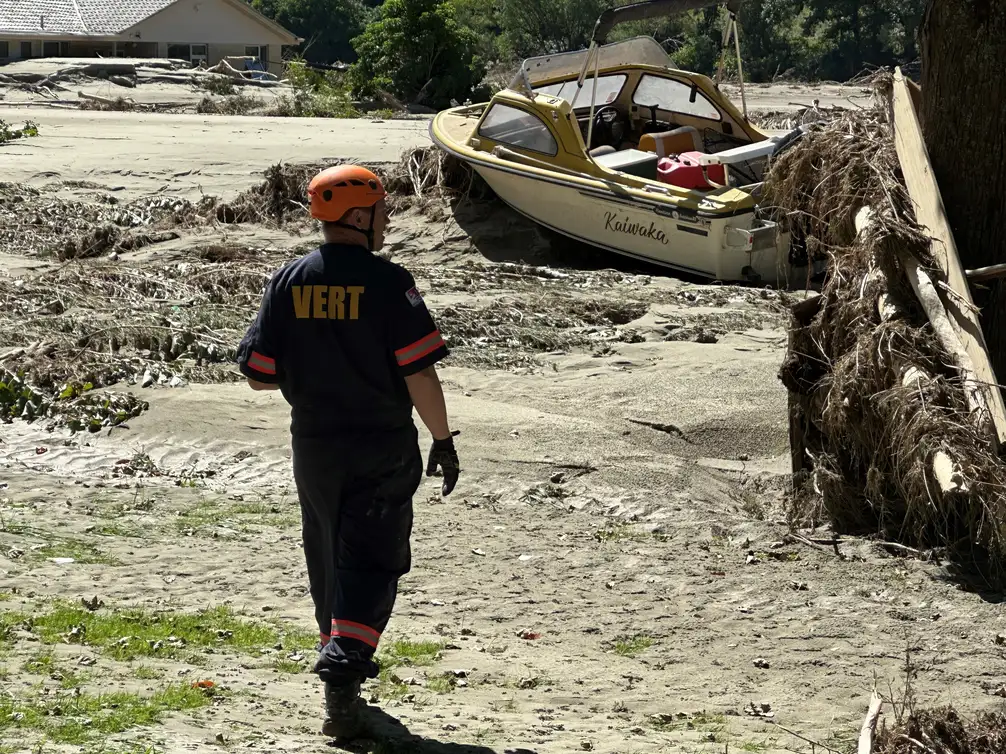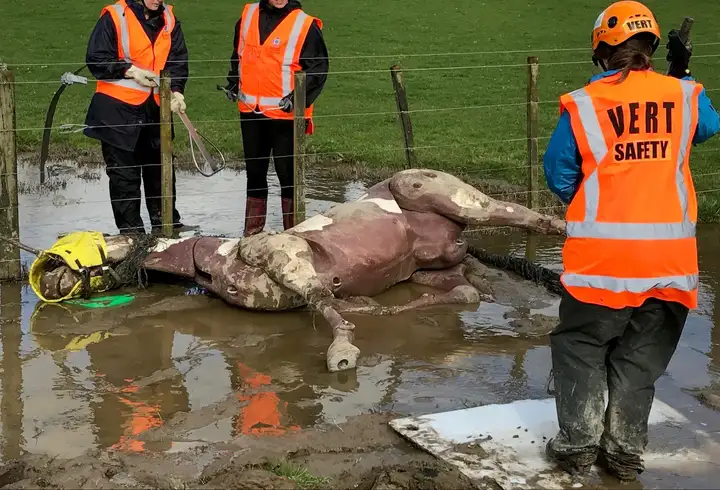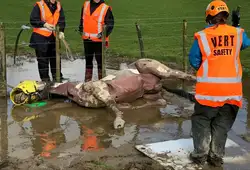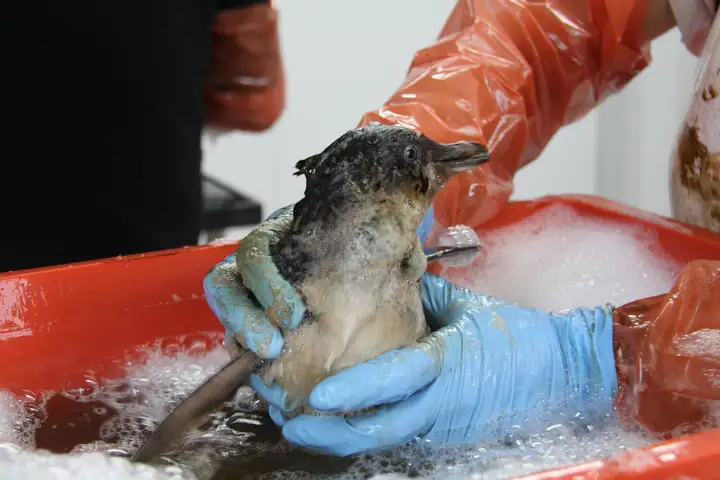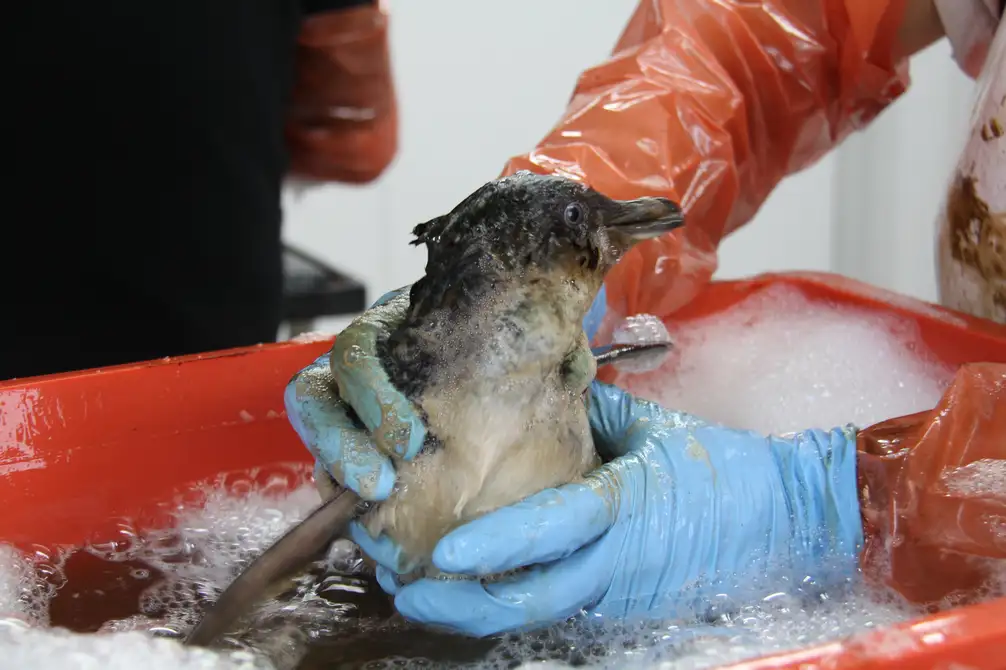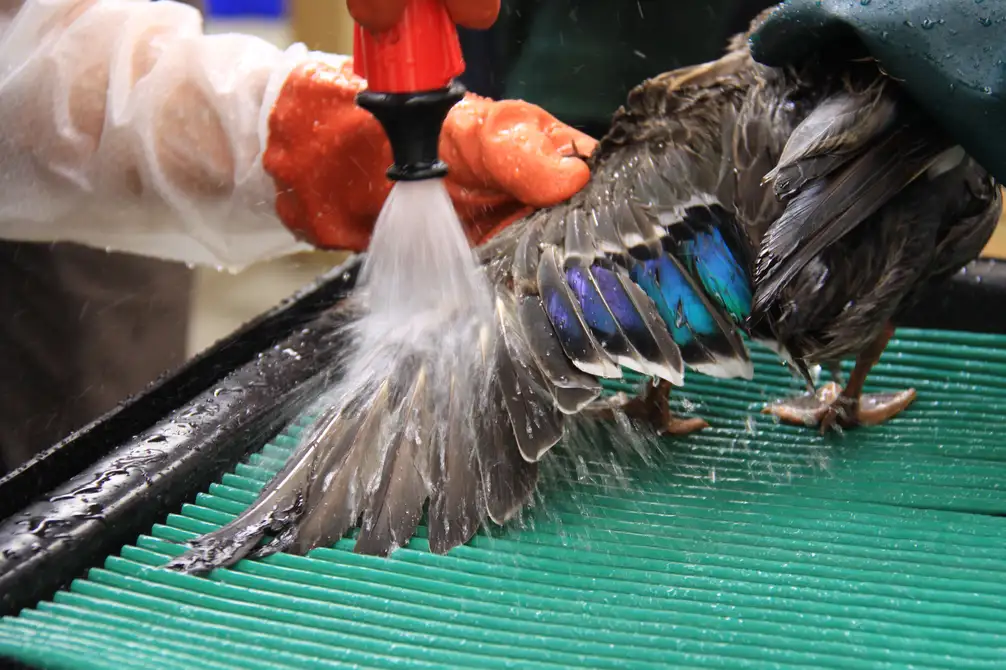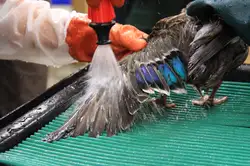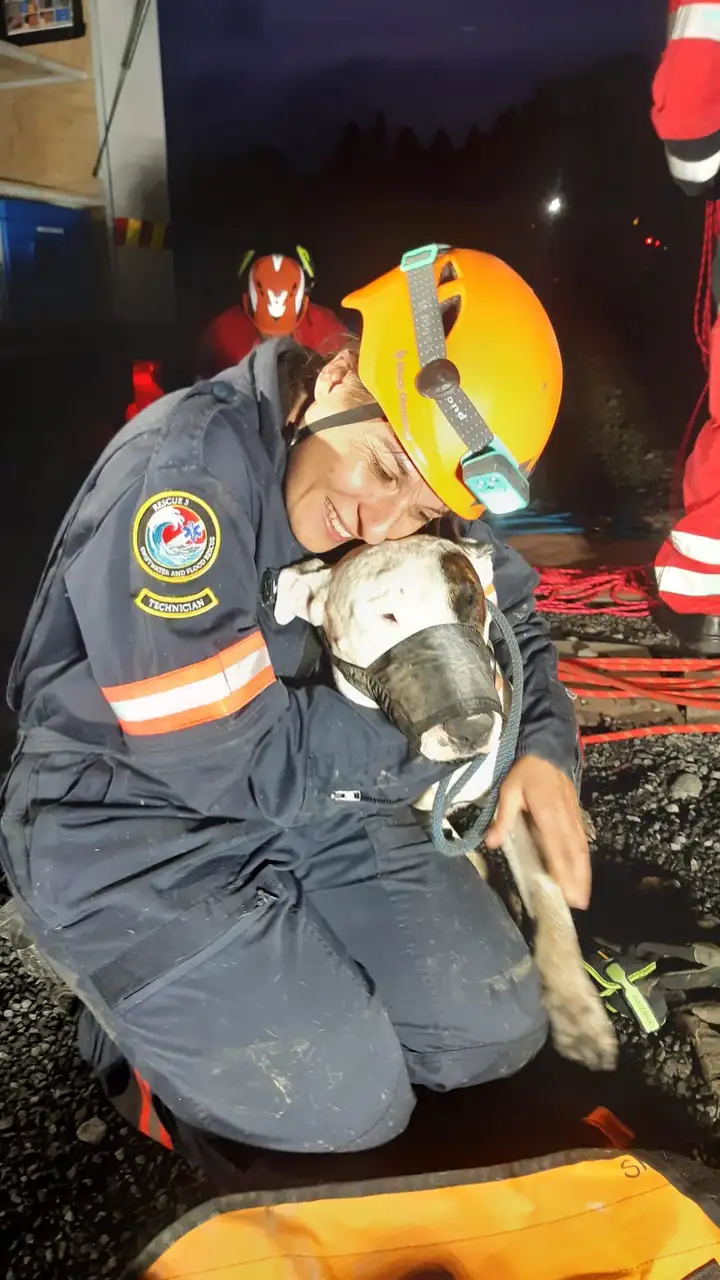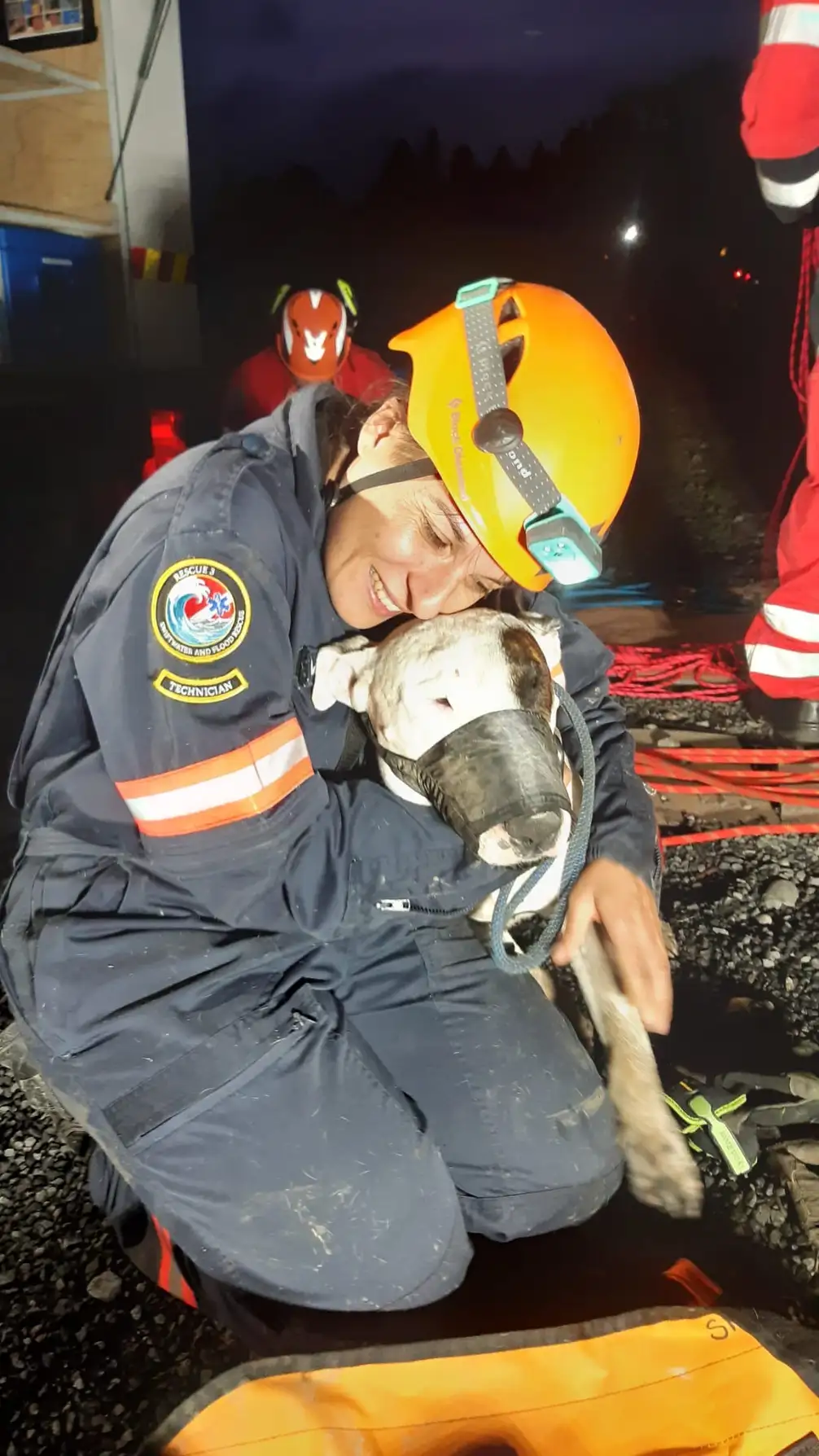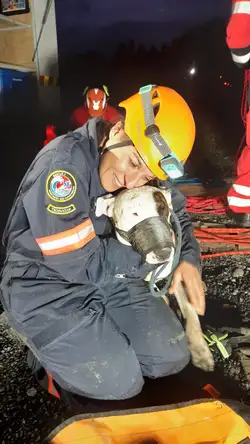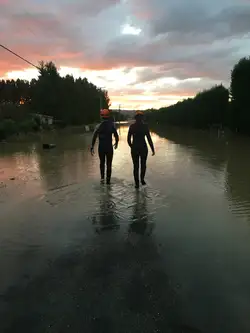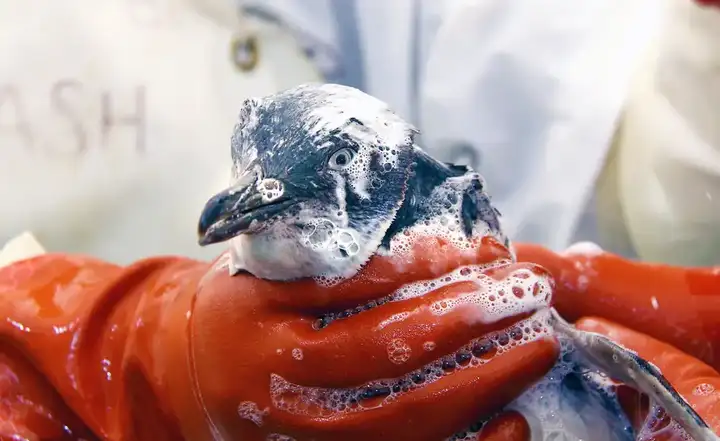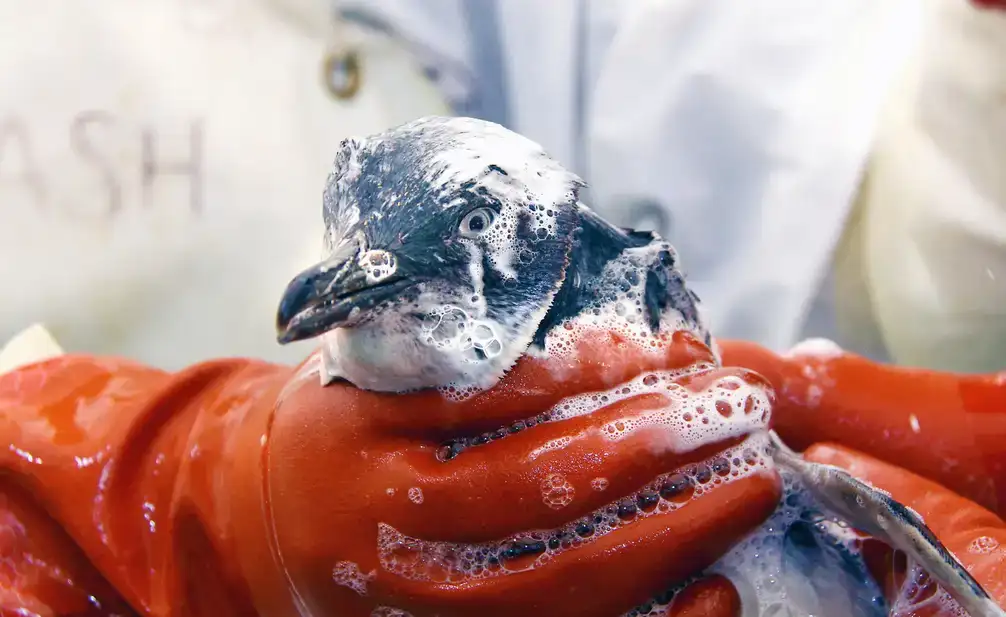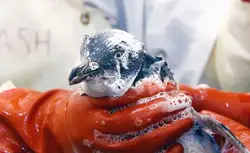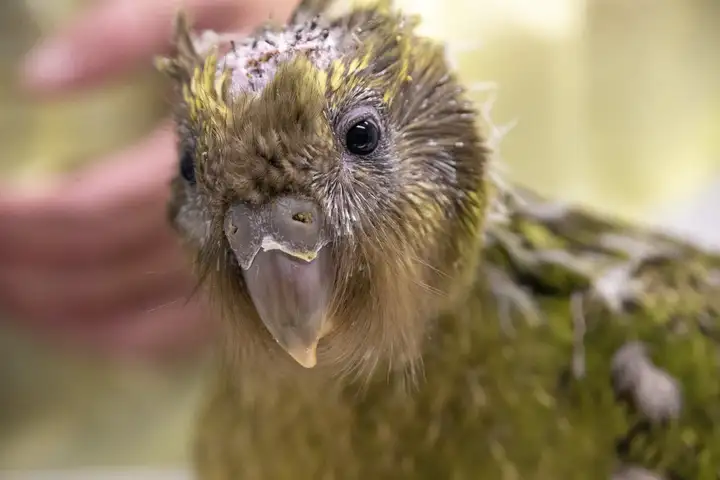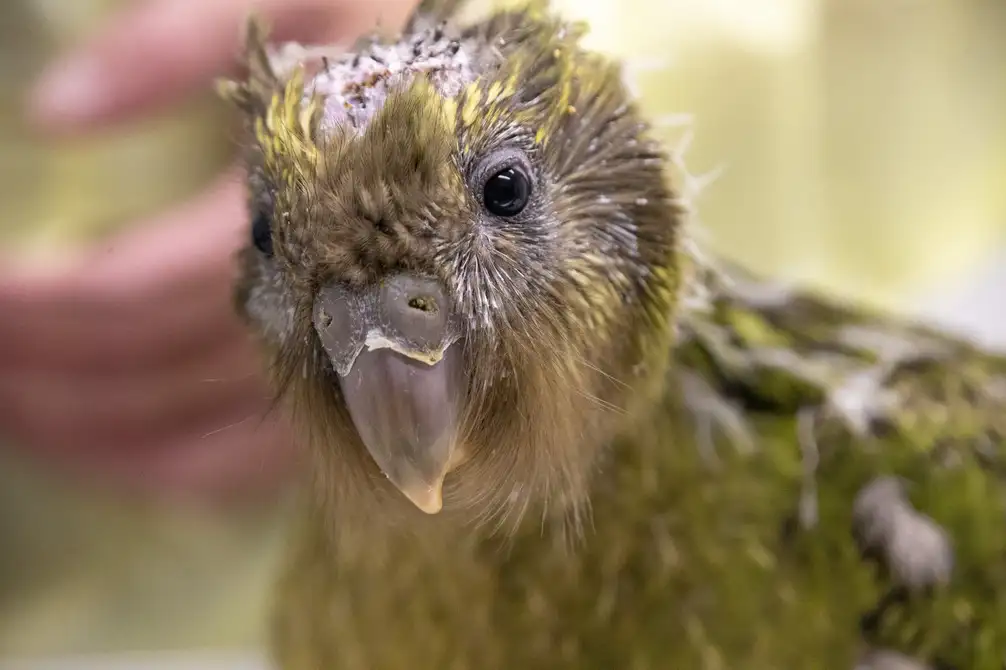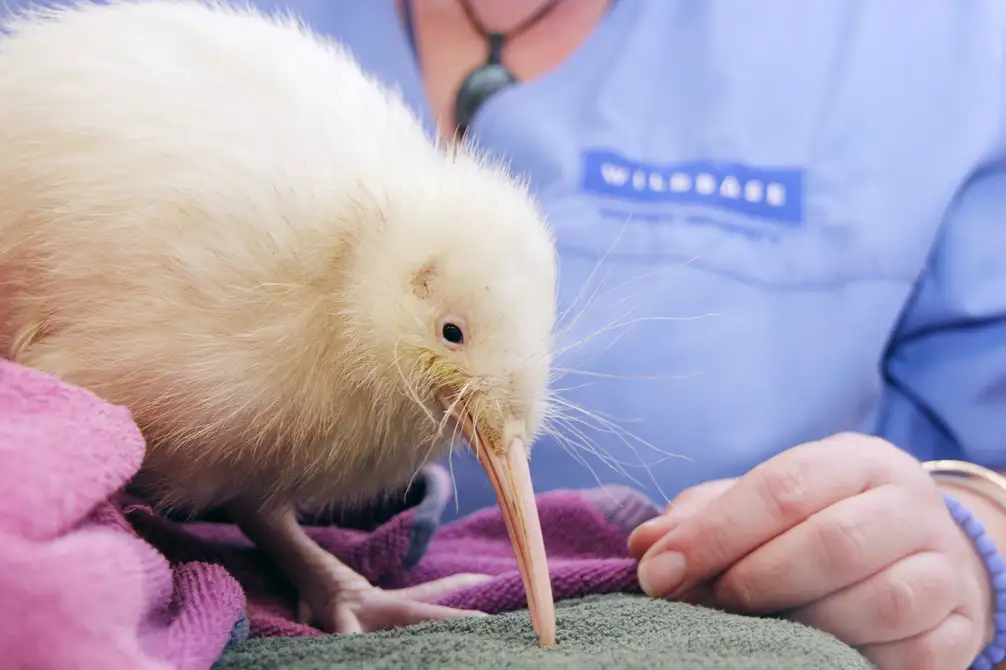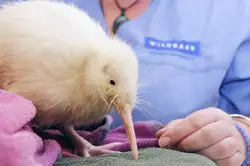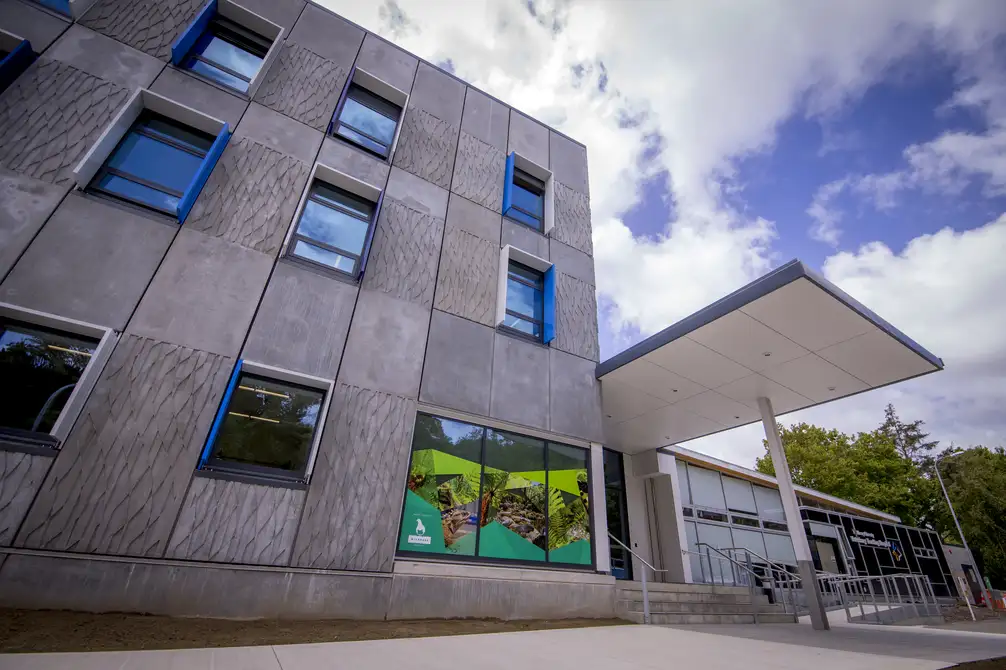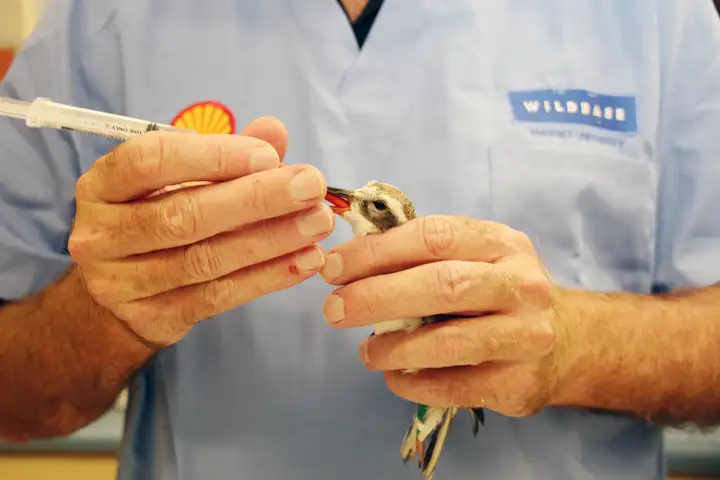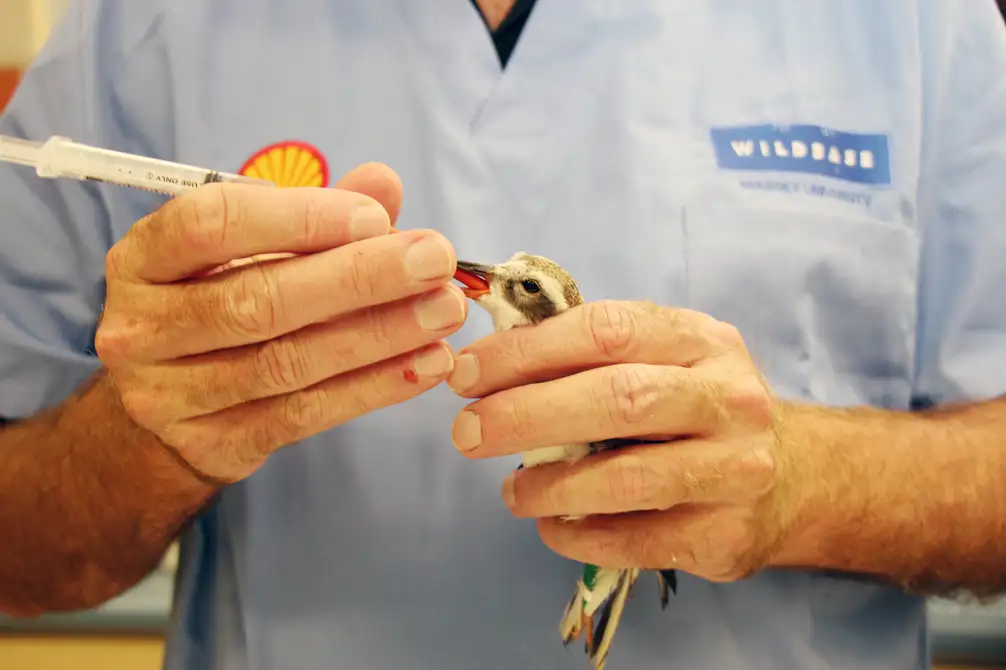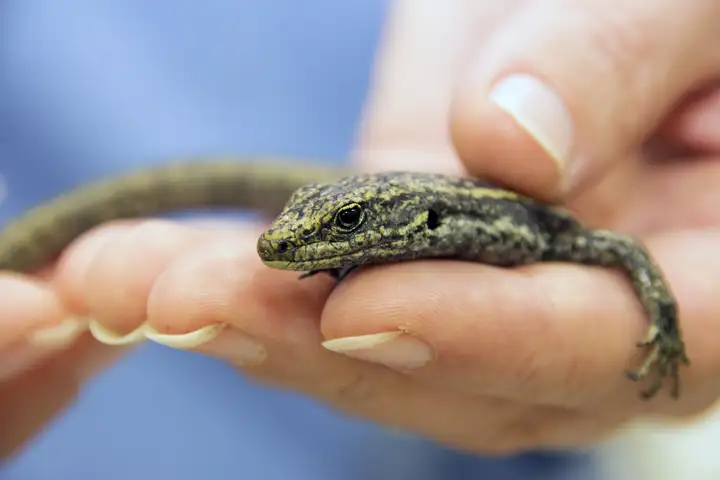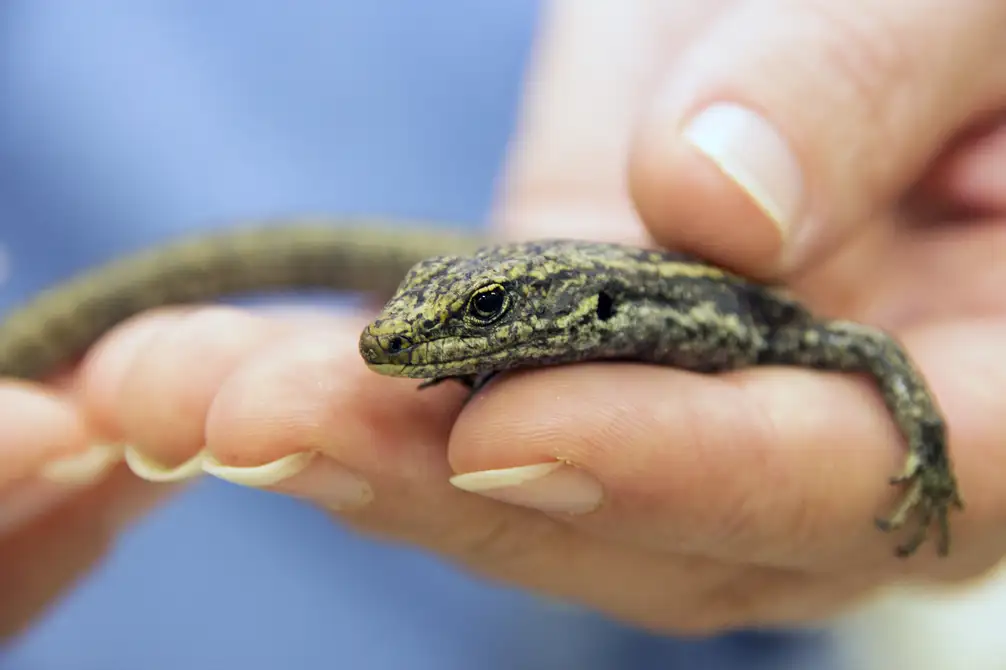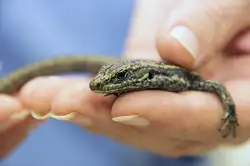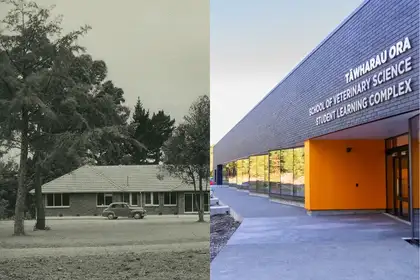
Then and now: Bernard Chambers Building in 1954 and the Student Learning Complex taken during the 2022 opening.
In 1963, the inaugural class of 32 veterinary students began their studies in the Bernard Chambers Vet Clinic and World War II army mess huts, originally intended to provide veterinary services to Massey University farms. Within five years, 21 vet students graduated as the country’s first home-grown veterinarians.
Since then, Massey has produced 4,465 Bachelor of Veterinary Science graduates, dedicated to enhancing animal welfare locally and globally. This number continues to grow, with class sizes recently increasing by 25 per cent.
While much has changed over the past six decades, a commitment to excellence remains. The School of Veterinary Science provides a world-class education through state-of-the-art facilities, integral hands-on learning experiences and passionate teaching staff. This has been recognised internationally with the veterinary science programme ranking 21st globally in the 2024 QS World University Ranking and standing as the highest-ranked veterinary school in Australasia.
Head of Tāwharau Ora School of Veterinary Science Professor Jon Huxley says the School is continually evolving to meet the needs and challenges of the veterinary profession.
“For over six decades, our School has remained focused on delivering excellence in education, research and clinical practice. Our goal is to ensure our graduates are equipped to make meaningful impacts in the field of veterinary science. The dynamic landscape of veterinary medicine underscores our responsibility to thoroughly prepare veterinary graduates by fostering their adaptability, critical thinking and lifelong learning skills. The veterinary profession within New Zealand depends on our emerging graduates being ready to effectively address challenges and opportunities in animal health, welfare and conservation.”
Enhancing the learning environment
In 1994, the Large Animal Teaching Unit (LATU) opened, hosting 40 hectares of grazing land and facilities to train Massey vet students in aspects of large animal handling and examination across a range of species. It remains an important fixture within the School, having undergone several upgrades including the addition of a lecture room and a sheep teaching facility.
The small working farm attached to the LATU is home to horses, cows, sheep, alpaca and pigs. Across all five years of the degree, veterinary students spend time in the LATU working on various skills to increase their expertise and deepen their understanding of animal welfare. Strict ethics ensure the animals lead long, productive lives while also providing invaluable learning opportunities.
In recent years, the Tāwharau Ora building upgrade programme has been underway, which sees exciting upgrades and expansions to existing spaces to support the learning of veterinary students and animal health and welfare throughout the farming community. The veterinary science complex received a gold award at the New Zealand Commercial Projects Awards in 2023, recognising the extensive efforts invested into the new facilities being the perfect fit for their intended use.
The pathology suite, which opened in 2021, offers world class facilities, including a spacious open-plan post-mortem area, preparation and storage facilities and walk-in fridges and freezers. Teaching can be conducted within the laboratory as well as from the large glass-fronted viewing gallery.
In 2022, the Student Learning Complex was officially opened, containing two large learning spaces, a modern foyer and seating areas for students to provide high-quality, fit-for-purpose facilities. The dry teaching studio provides an open-plan, flexible learning environment for teaching and practicing necessary clinical skills, while the wet laboratory is specifically designed to support students learning anatomy.
The farm animal hospital, also opened in 2022, contains the university’s first dedicated facility to care for farm and production animals. Equipped with a small surgery suite and animal stalls suitable for various farm animals, the hospital is complemented by a range of supporting spaces.
Currently, construction is underway for the Ngā Huia building, the latest project in development. The second floor will house research laboratory spaces for vet staff, alongside office accommodations for staff, technicians and post-graduate research students. On the first floor, vet students will have access to lockers, changing rooms, study and relaxation areas, as well as facilities for food preparation. The project is set to be completed in the second half of 2025.

Artistic impression of the Ngā Huia building set to be completed in the second half of 2025.
Creating pathways for diversity and change
The creation of the Veterinary Māori and Pacific (VetMAP) student pathway is rooted in research efforts by Professor Eloise Jillings, Ngāti Māru ki Hauraki, addressing indigenous access to veterinary education. The initiative ensures student success through academic, cultural and pastoral support from application to completion of the Bachelor of Veterinary Science degree.
Since the implementation of VetMAP, Dr Jillings says the holistic wraparound programme of support has already delivered results.
“Triple the number of Māori and Pacific indigenous students are now meeting the standards to get into vet school, which is important as inclusion, equity and representation of the breadth of our society is crucial to a healthy veterinary industry. Continuing to support our Māori and Pacific students to reach their goals to become veterinarians enables the profession to benefit from the inclusion of Māori and Pacific worldviews.”
The School remains committed to upholding the ‘Three Rs’ of animal welfare: replacement, reduction and refinement. Continuous enhancement to spaces like the LATU and clinical skills facilities aim to optimise animal handling and housing, as well as finding alternative teaching methods to ensure high quality learning while also prioritising animal wellbeing.
Furthering this work, Senior Technician Neil Ward and his colleagues from Information Technology Services were honoured with their second Aotearoa New Zealand John Schofield 3Rs Award in 2023. The team were recognised for their development of an innovative web-based database application which creates a pathway for teachers and researchers to share samples for use in research, testing and teaching.
For animals, community and the environment
In addition to research and teaching, the School has fostered additional ways to support the community through looking after the wellbeing of pets and wildlife alike.
Established in 2010, Massey University Veterinary Emergency Response Team (MUVERT) are one of the first veterinary emergency response team in Australasia. Comprised of dedicated volunteer staff, MUVERT specialises in technical animal rescue to address animal emergencies. They provide on-site veterinary treatment and disaster assessment, responding to requests for assistance by members of the public, local vets, animal groups, emergency services and the Ministry of Primary Industries. MUVERT provided support during the 2011 Christchurch earthquake, 2017 Edgecumbe Flood, 2019 forest fires in Nelson and in Hawke’s Bay following Cyclone Gabrielle.
Within the School is also the Wildbase Oiled Wildlife Response team who focus on mitigating the impact of oil pollution on wildlife. Through research, education and hands-on leadership, they strive to enhance oiled wildlife response capabilities across the Asia-Pacific region. The team coordinates New Zealand’s National Oiled Wildlife Response Team and were front-line responders during the Rena oil spill.
The Wildbase Hospital has been caring for New Zealand’s rare and endangered wildlife since being established in 2002, treating almost 7000 native wildlife patients.
Their ongoing mission is to provide essential treatment and support to sick and injured native wildlife, while providing scientific and research services and lending their expertise to conservation programmes. Notable achievements within their 21 years of service include a world-first brain surgery on a young kākāpō chick, providing optometrist support for a ruru with a head injury and helping a kiwi chick be successfully removedfrom its shell after hatching complications.
A continuing legacy
Over its 60-year history, the School of Veterinary Science hosts a rich and unique legacy, but the goal remains the same: to continue shaping a promising future for animal health, wellbeing and sustainable production by nurturing the next generation of bright minds to strengthen the veterinary field.
To all current and aspiring professionals in the veterinary field, we thank you for your dedication and hard work and wish you a happy World Veterinary Day!
Related news
Answering the call of the wild
With a patient history ranging from lions to kiwi, alumni Tori Turner, Ngāti Maniapoto, is building towards his dream career in his current role as a Veterinary Resident in Zoo and Wildlife Medicine.

Bridging bonds between pets and their humans
The journey to becoming a veterinarian has been a long road for alumni Ares Fang, but one well worth it for the daily reward of making a positive difference in the lives of animals and their owners.

Veterinary Science soars in global rankings
The university’s reputation in Veterinary Science has been highlighted in the latest Quacquarelli Symonds (QS) Subject Rankings.
